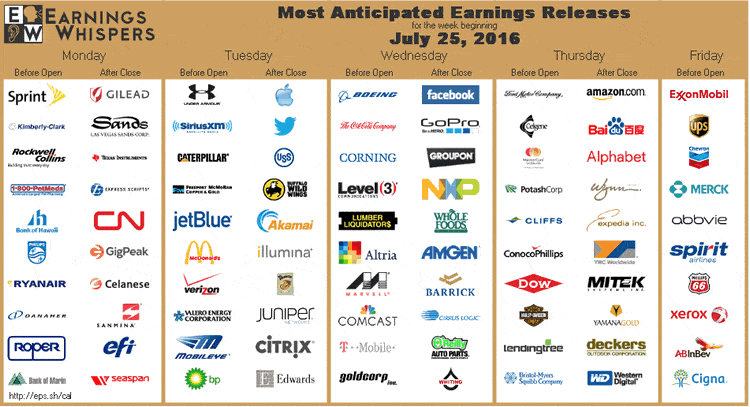In my last blog post, I discussed the nuances of change in implied volatility (IV) leading up to earnings release and following the announcement. Today I want to discuss some practical considerations that need be addressed for the earnings trader.
The first consideration is to find companies that will report earnings in the near future.
There are thousands of publicly traded companies each of whom reports earnings quarterly; manually screening through earnings dates can be a Herculean task. Importantly, only a few of those companies have sufficient option liquidity, an essential characteristic for a trade, to be considered for a potential trade.
For this first step, I find the easiest and most reliable resource to be the weekly list of “Most Anticipated Earnings Releases” published by EarningsWhispers.com in a free Email sent to registered users every week. My routine is to review this listing for the upcoming week, select the most liquid options chains for consideration of trades, and enter them onto a “to do” list for the upcoming week. An example of such a list taken from a week at the heart of the “season” is shown below.

I then routinely begin to consider each day entering specific trades after 3PM Eastern time for earnings that will be released that same day after market close or before market open the following day. The reason for waiting until the last trading hour before the event is twofold:
- The full magnitude of the IV rise is often not realized until the last moments as traders rush to open positions, and
- Most strategies include as an integral part the statistically calculated expected price move projected to result from earnings release; it is usually better to let any final day price movement be reflected in the price of the underlying before entering the trade.
Earnings season occurs for a few weeks every quarter. While there may be random earnings releases between these seasons; for the most part earnings trades will be clustered around these times.
The second consideration is to assess the option liquidity before entering a trade.
If you enter illiquid options you WILL find yourself like the guest in Hotel California. You may be able to negotiate a price to enter, but you will never leave at an advantageous price. Avoid illiquid chains at all cost!
So what constitutes liquid as opposed to illiquid option chains?
There are several approaches to answer this question; the first relies on the close negative correlation between liquidity and the absolute width of the Bid/Ask (B/A) spread. The narrower the B/A spread the more liquid the options. There are certain notable exceptions to this correlation such as CMG.
The first group contains the “no brainers” – the AAPL, XOM, INTC, et al options series that have hundreds of contracts of Open Interest (OI) in a wide range of expirations and strikes that trade at or under 5¢ Bid/Ask spread. The second is a group that trades at B/A spreads between 5-15¢. These can be traded as well provided that there is adequate OI in the strikes you wish to trade. Finally, there is the group with B/A spreads >15¢; trading these makes life far too hard. If a major price move of the underlying occurs that is beyond the expected move, the B/A spreads will almost certainly widen and make exit from the trade at a reasonable price difficult or impossible.
There is yet another important feature to assess in liquidity and that is the Open Interest.
Open Interest must be considered in both absolute size terms as well as relative to the size of the trade you are considering. As rules of thumb, you want to see a total of at least 200 contracts as OI, and do not want your trade to constitute more than 3% of the current OI.
Finally, for the mathematically rigorous, Jim Bittman has shown that “correct” way to evaluate B/A spread, as an indicator of option liquidity is to consider the difference in the IV of the Ask and the Bid prices. But that is a discussion for another day.
It is critical to understand the points we have discussed so far in order to understand the approach to earnings trades. In our next installment, we will discuss approaches to determine the expected move of a stock and the impact that has on trades.
Do you trade earnings events? Leave a comment below and let me know what your process is.



Do you have a link for Bittman’s presentation re option’s liquidity?